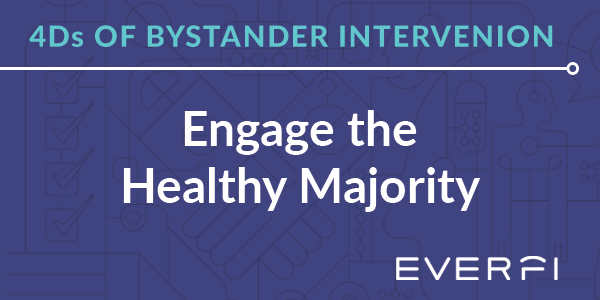There are three important steps that organizations can take to educate employees about their role as active bystanders and to make it safe and comfortable for them to do so:
In previous posts, we talked about how to raise awareness of inappropriate behaviors in the workplace and how to impact employee attitudes that may keep them from stepping forward when they observe inappropriate behaviors. In this third post of our series, we’ll talk about an important final step: action.
The Role of an Active Bystander
Employees have a very important role to play in helping their organizations ensure a safe and supportive environment for all. Serving in the role of an active bystander, though, does not mean that employees must act alone in identifying and responding to inappropriate behaviors. In fact, not all employees will feel comfortable with stepping forward to confront other employees—and that’s okay. There are, in fact, a variety of actions that employees can take to support a strong culture.
Organizations, in turn, need to make sure that they have effectively equipped their workforce with tools to take action. These actions can range from redirecting behaviors indirectly, to direct confrontation and reporting.

Let’s take a look at a handful of useful actions:
- Disrupt or redirect the interaction. Change the subject or offer a positive comment about someone to counter a negative remark.
- Offer support after-the-fact. Check-in with an employee who was the target of a concerning remark or behavior.
- Directly confront the situation. “I’m sorry, but what you just said is inappropriate.” Or, “That type of behavior is not consistent with our corporate values.”
- Report the behavior. Employees always have an opportunity to raise concerns to supervisors, managers, senior leaders, and HR professionals when they observe or hear behavior that is inappropriate.
Ensuring that employees know the various ways that they can serve in an active bystander role can help support a positive culture of mutual respect.
Best Practices
Helping employees take action as active bystanders requires more than just a one-time reminder during new hire orientation or annual training. It’s important to communicate about the desired culture and the expectations of employees’ roles in helping to maintain that culture on an ongoing basis. In addition, organizational leadership can have a very positive impact as they model these desired active bystander behaviors. Their positive interventions—or lack thereof—will have a profound impact on employees’ willingness to serve in this role.
Harnessing the Power of the Three A’s
HR and organizational leaders can’t possibly be alert to all of the interactions that take place in their organizations, regardless of the organization’s size. Employees, therefore, play a critical role in helping to support and ensure a safe and positive culture. By following these three steps toward a safe and supportive workplace—Awareness, Attitudes, and Action—and supporting them through ongoing communication and training, organizations can create a climate where everyone can thrive.

